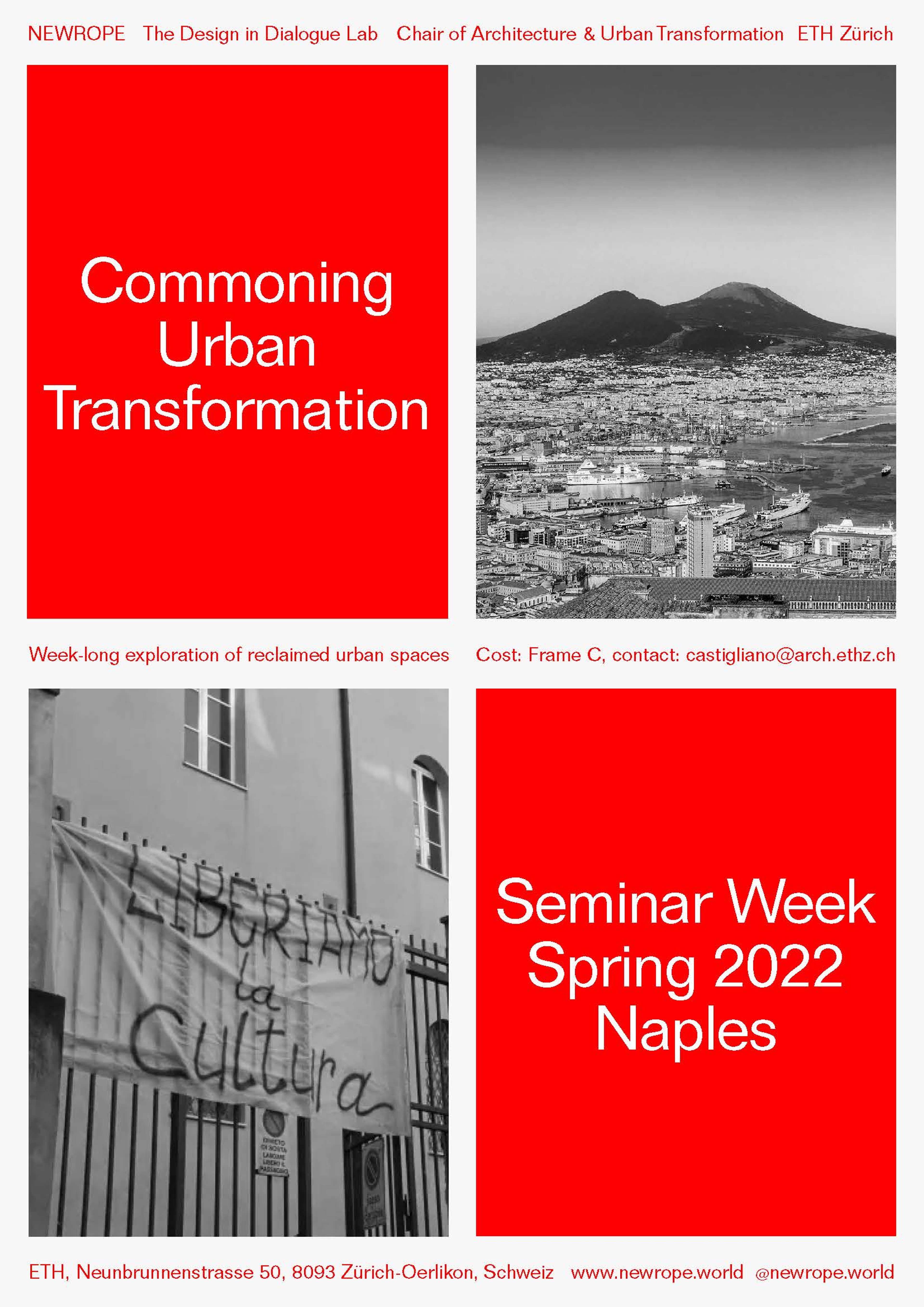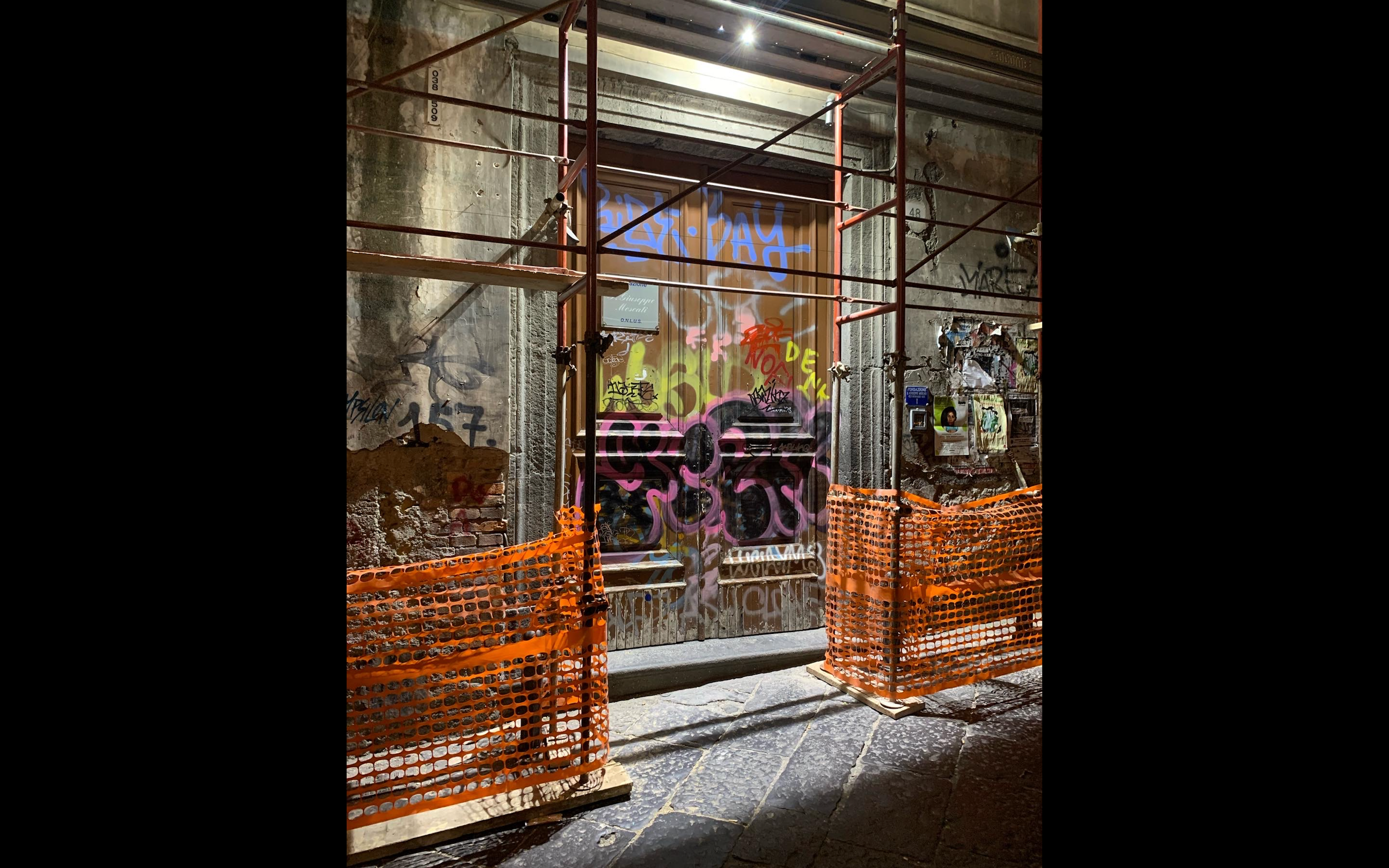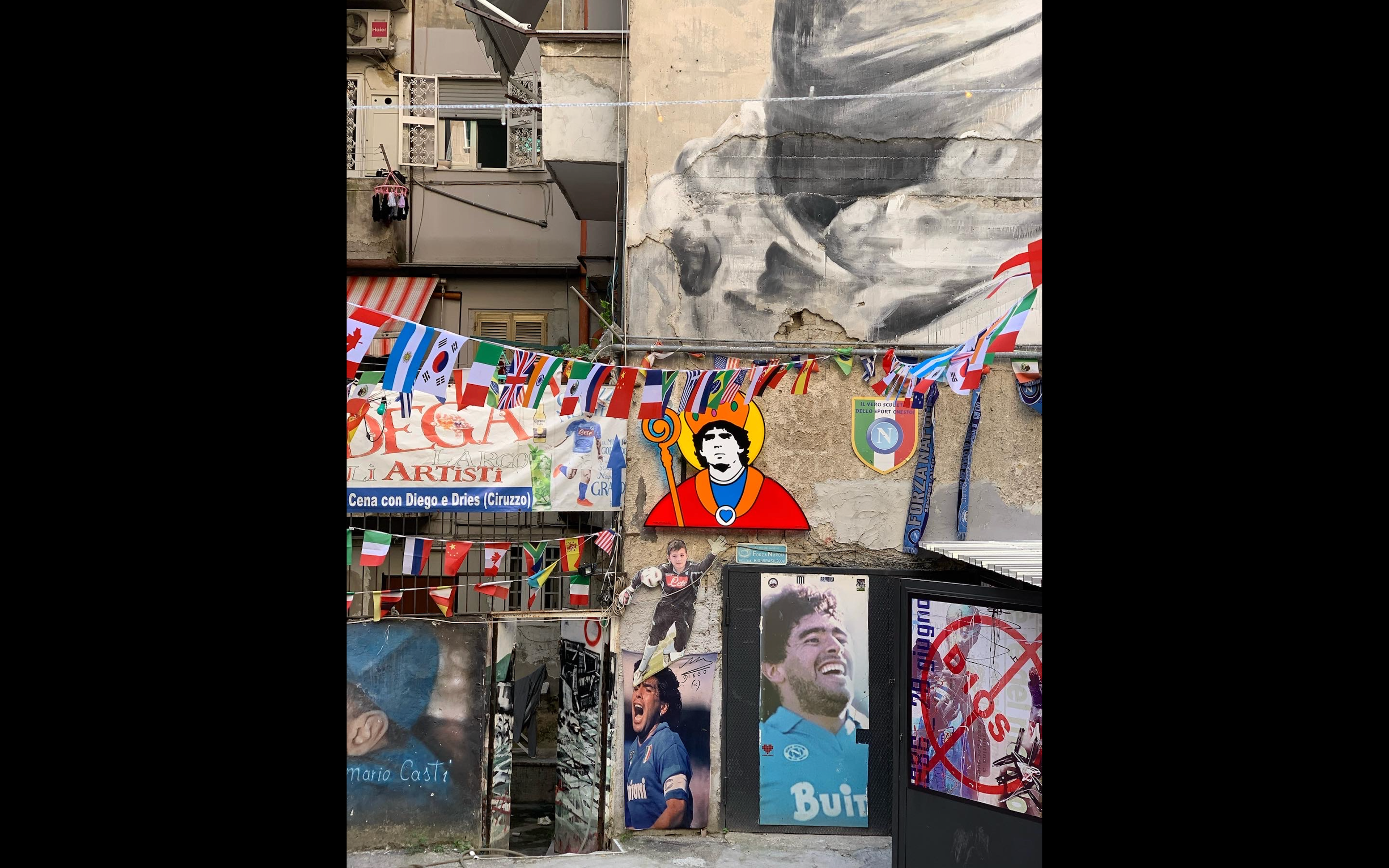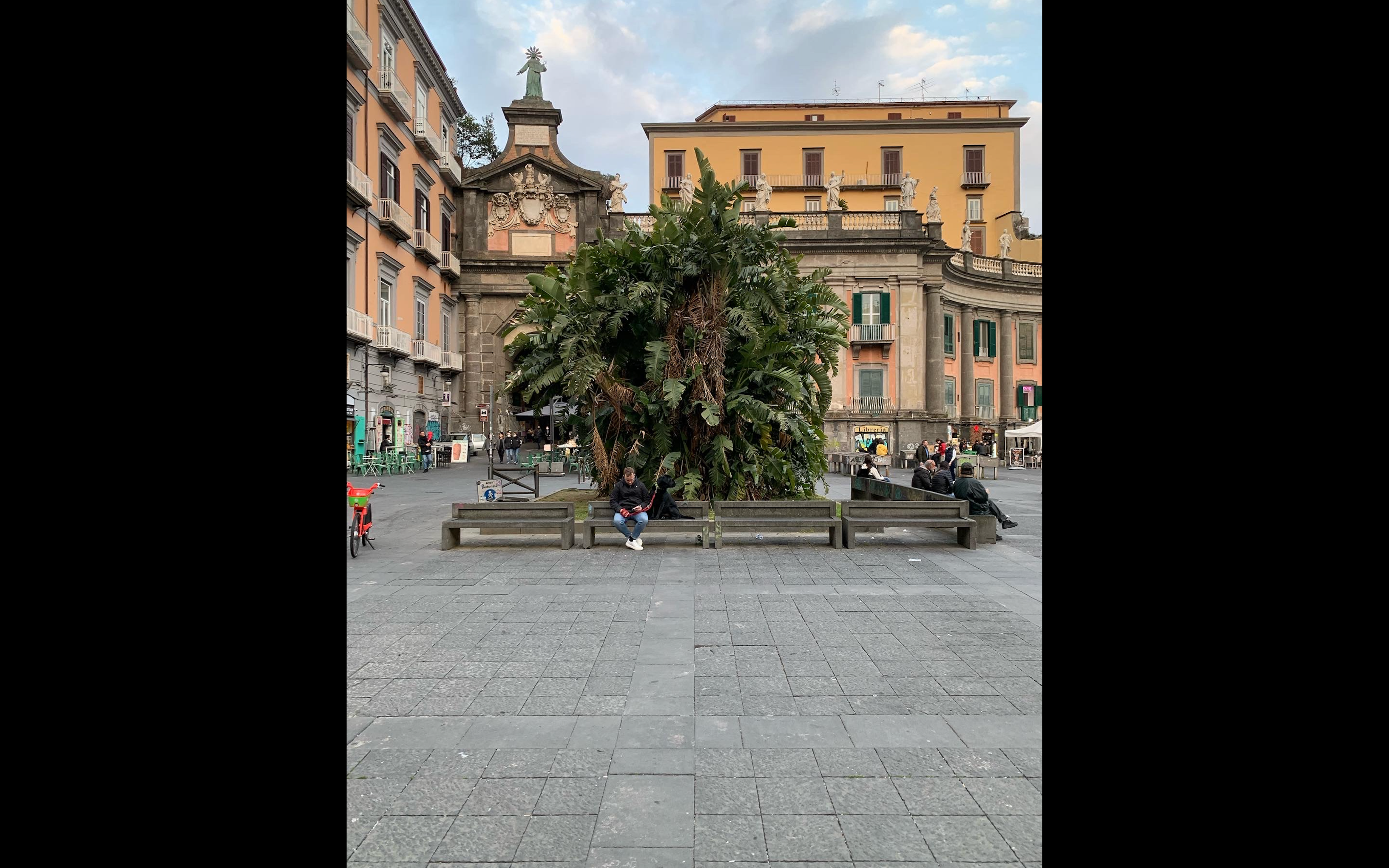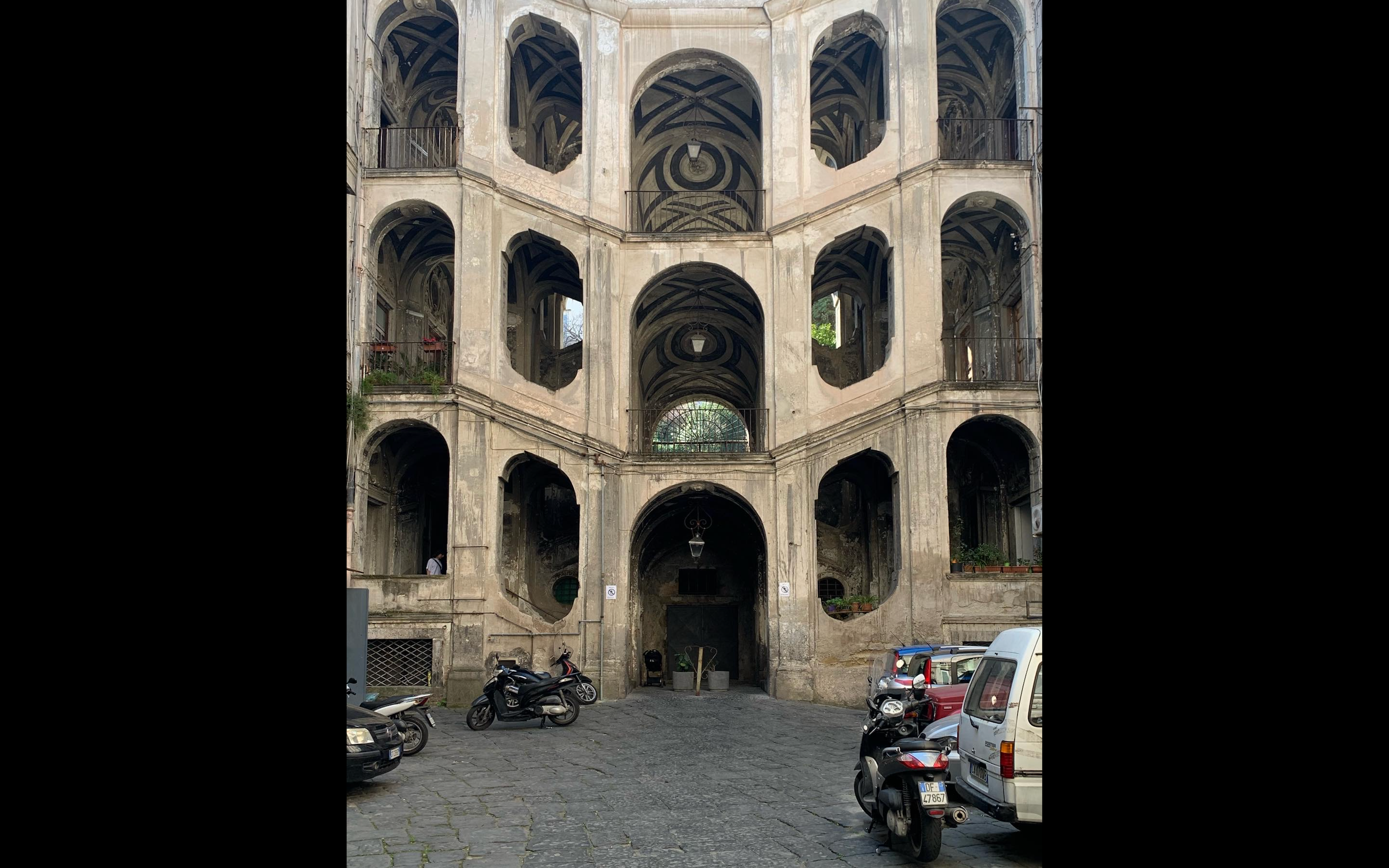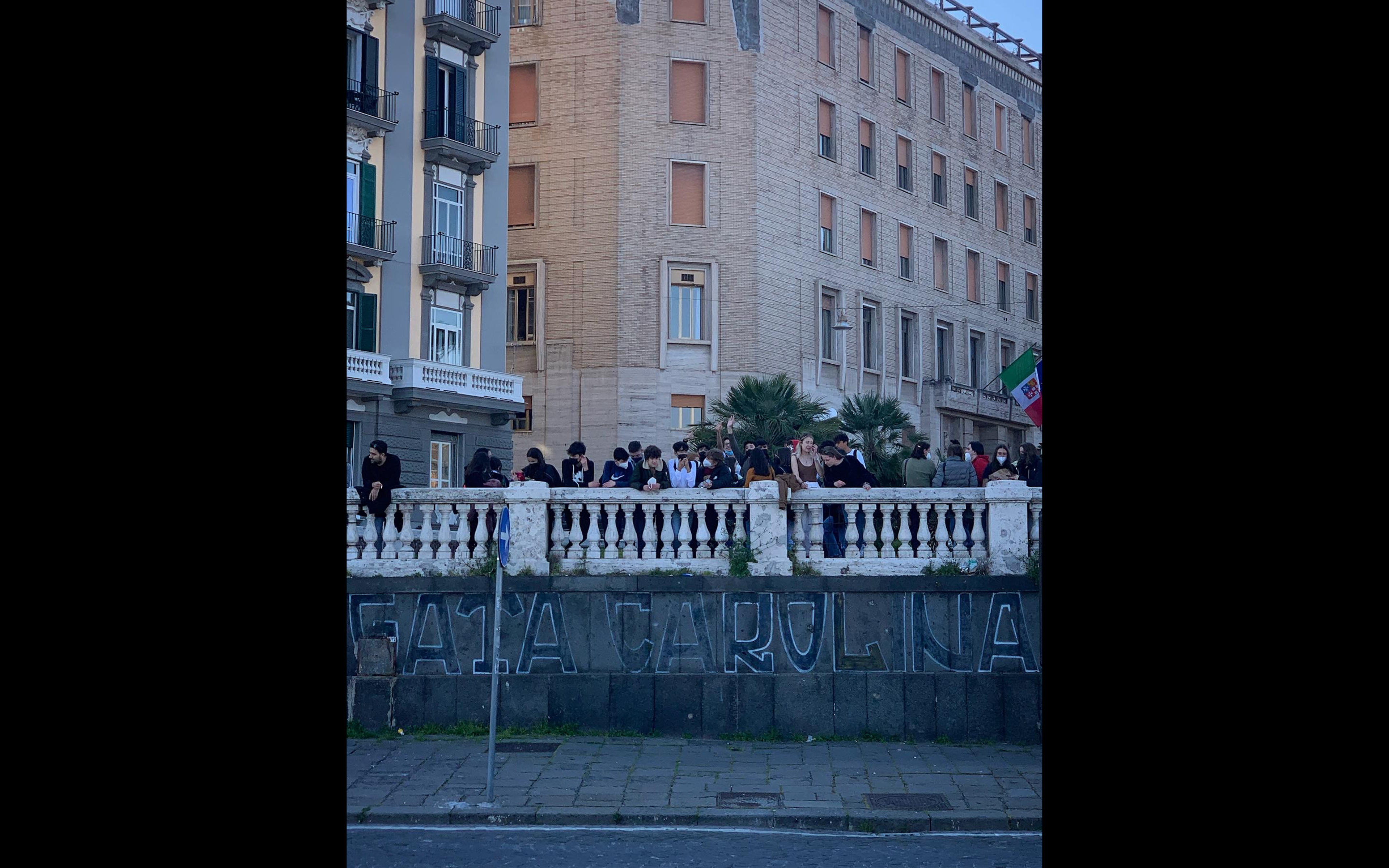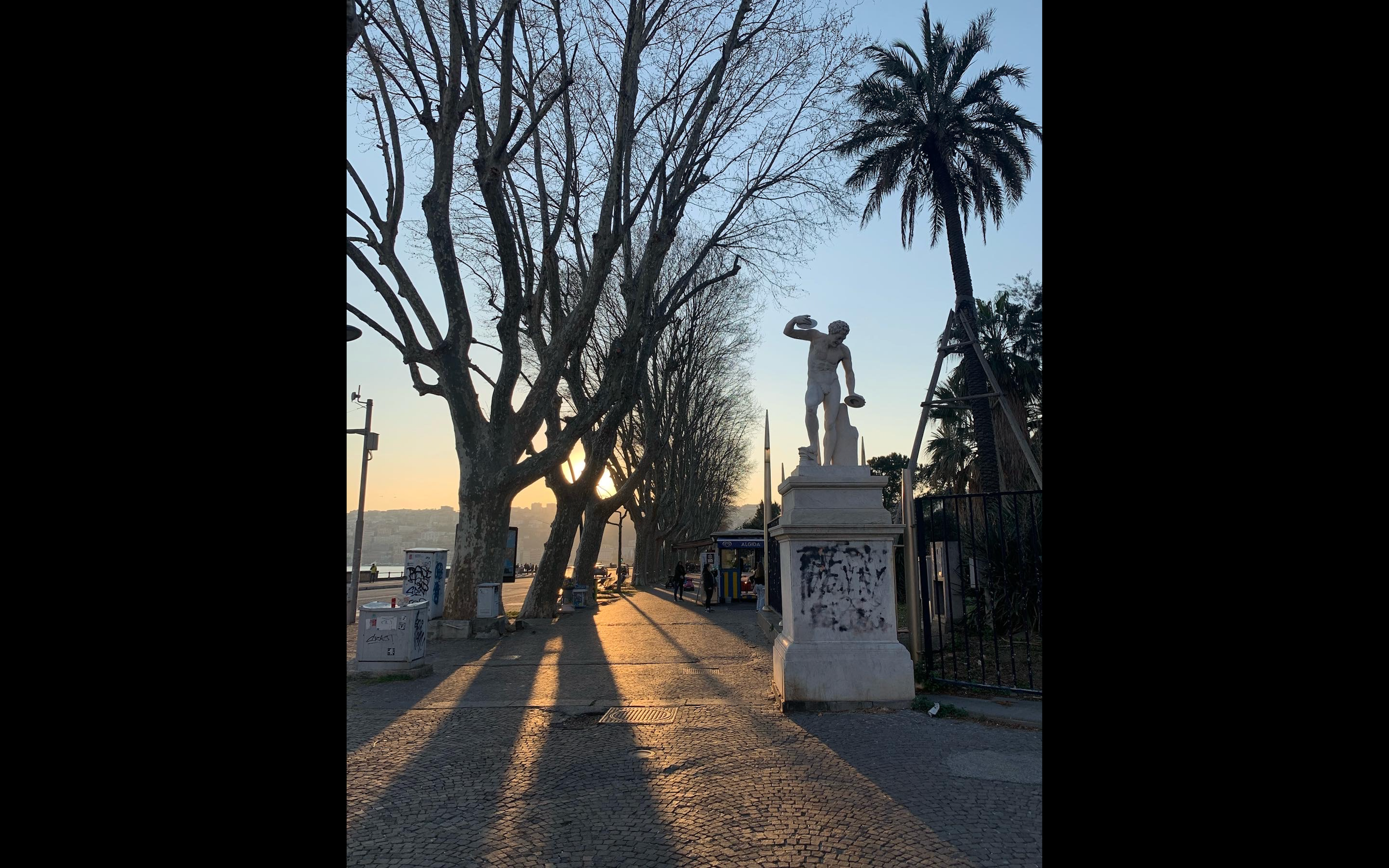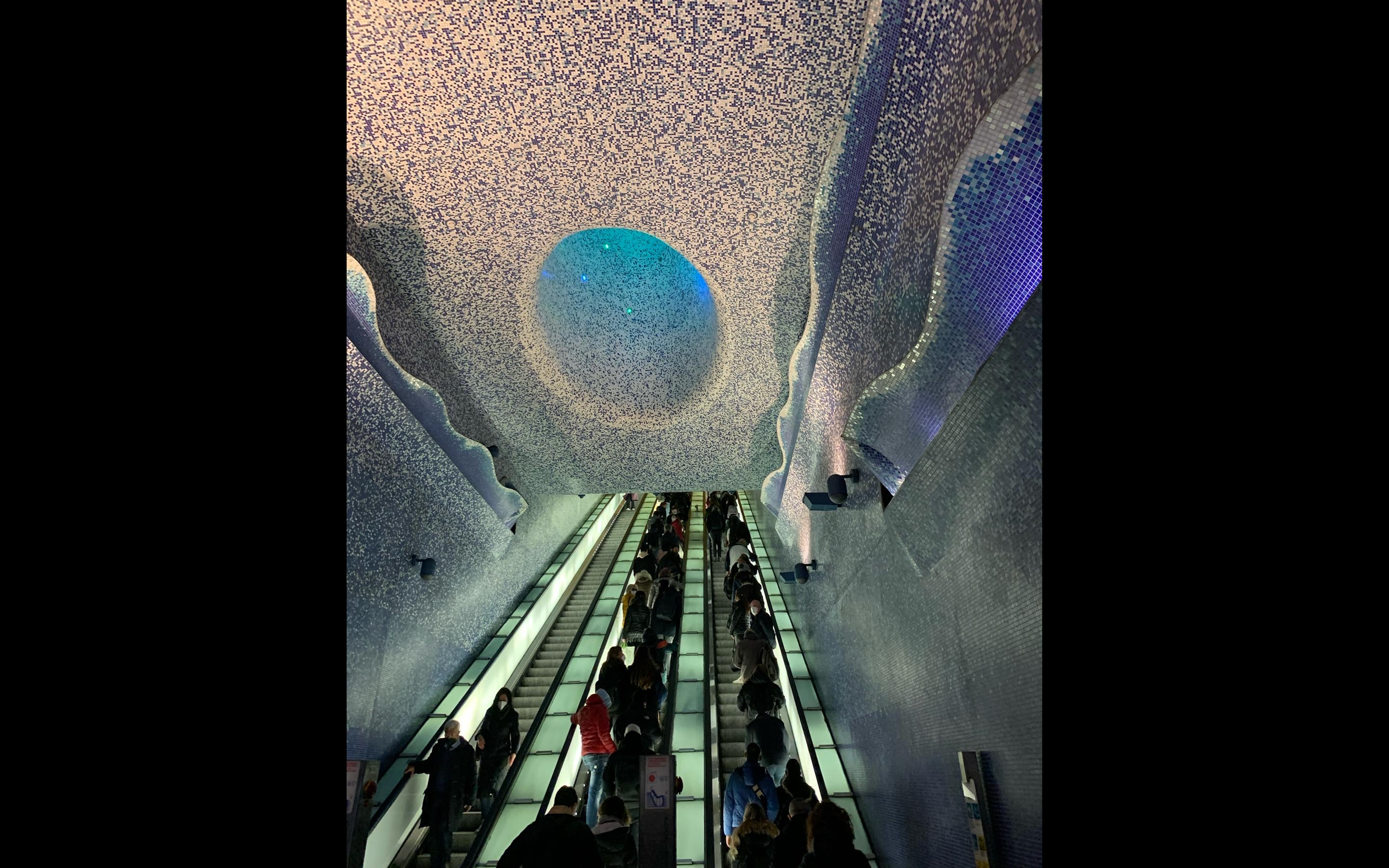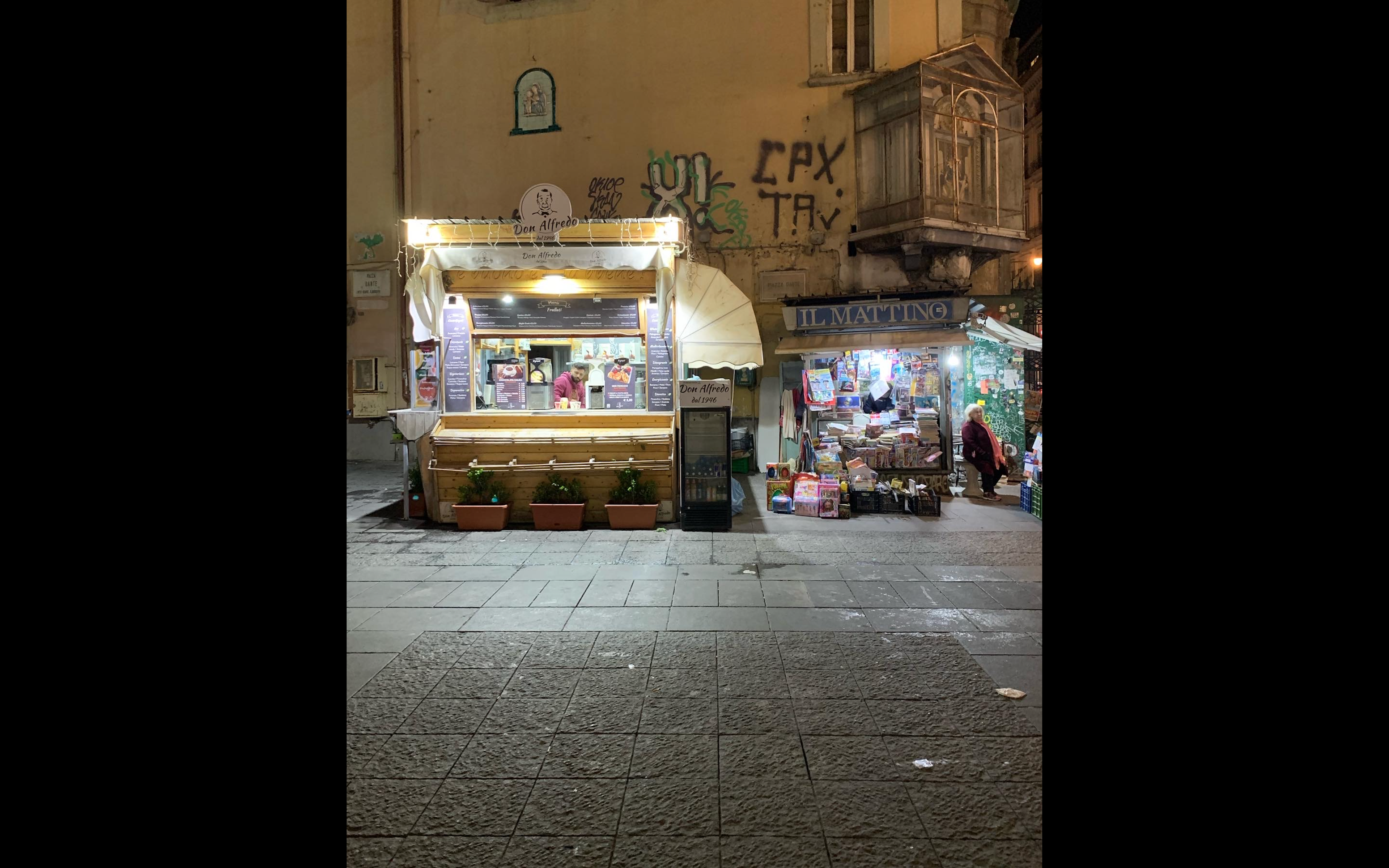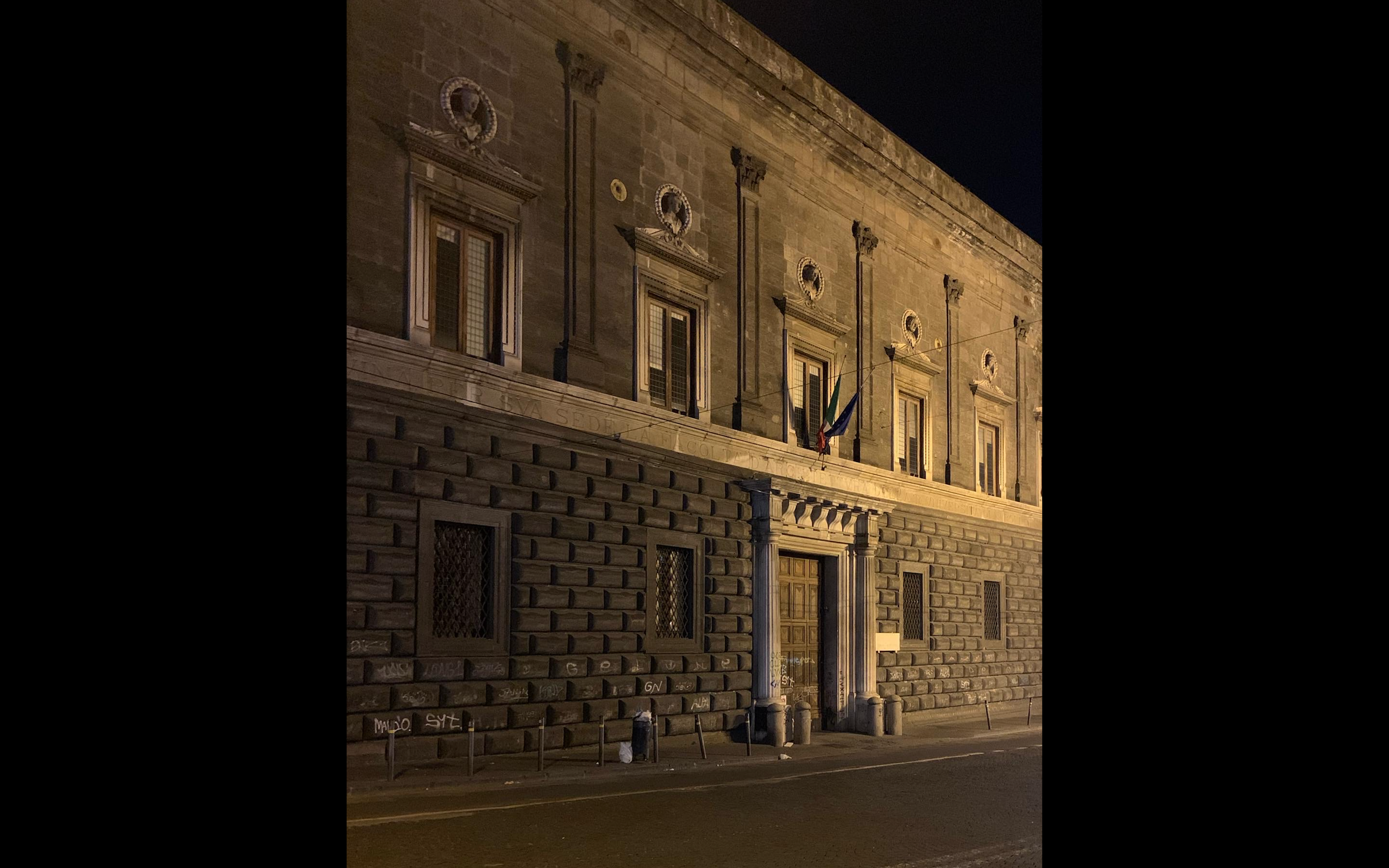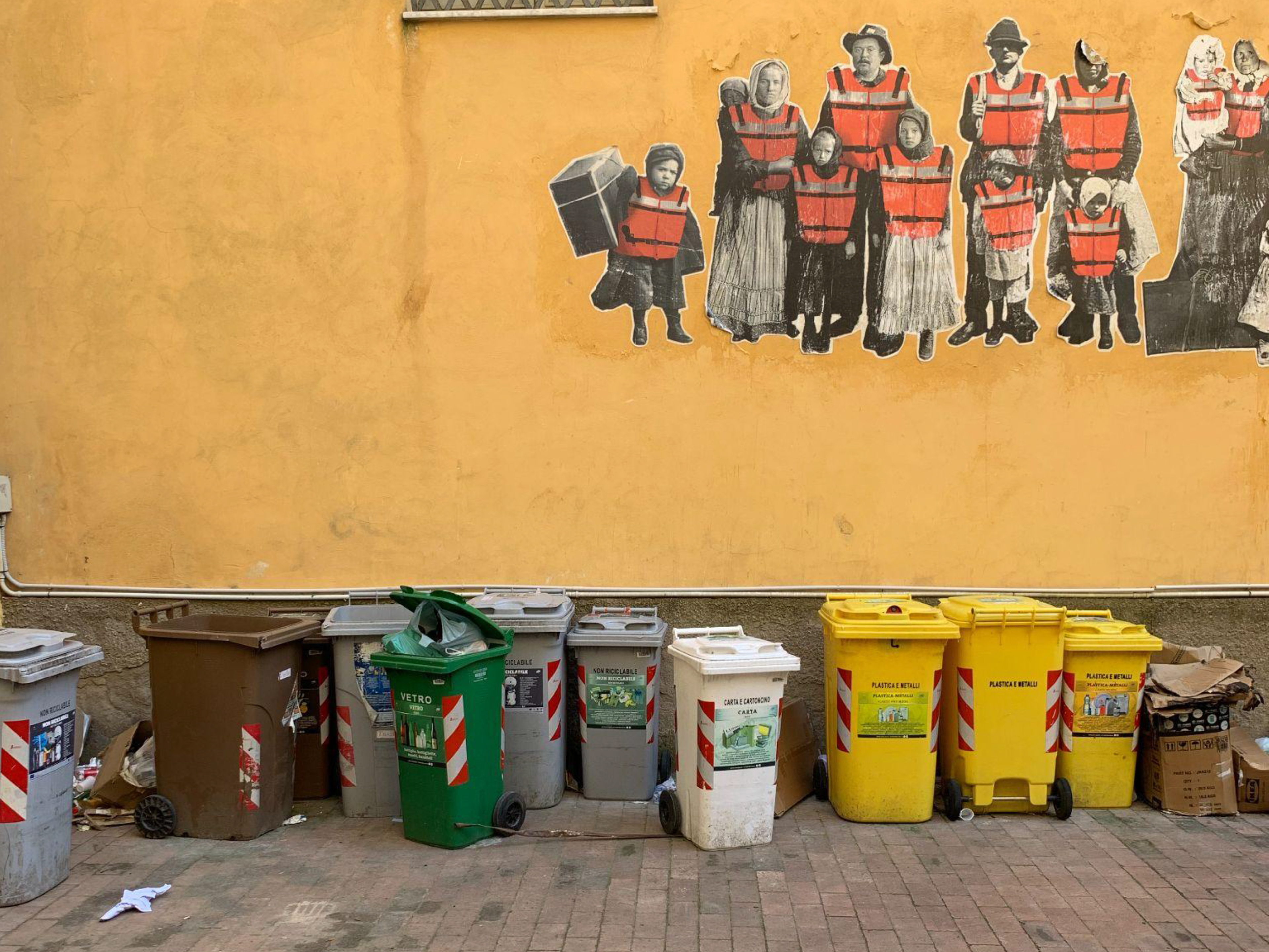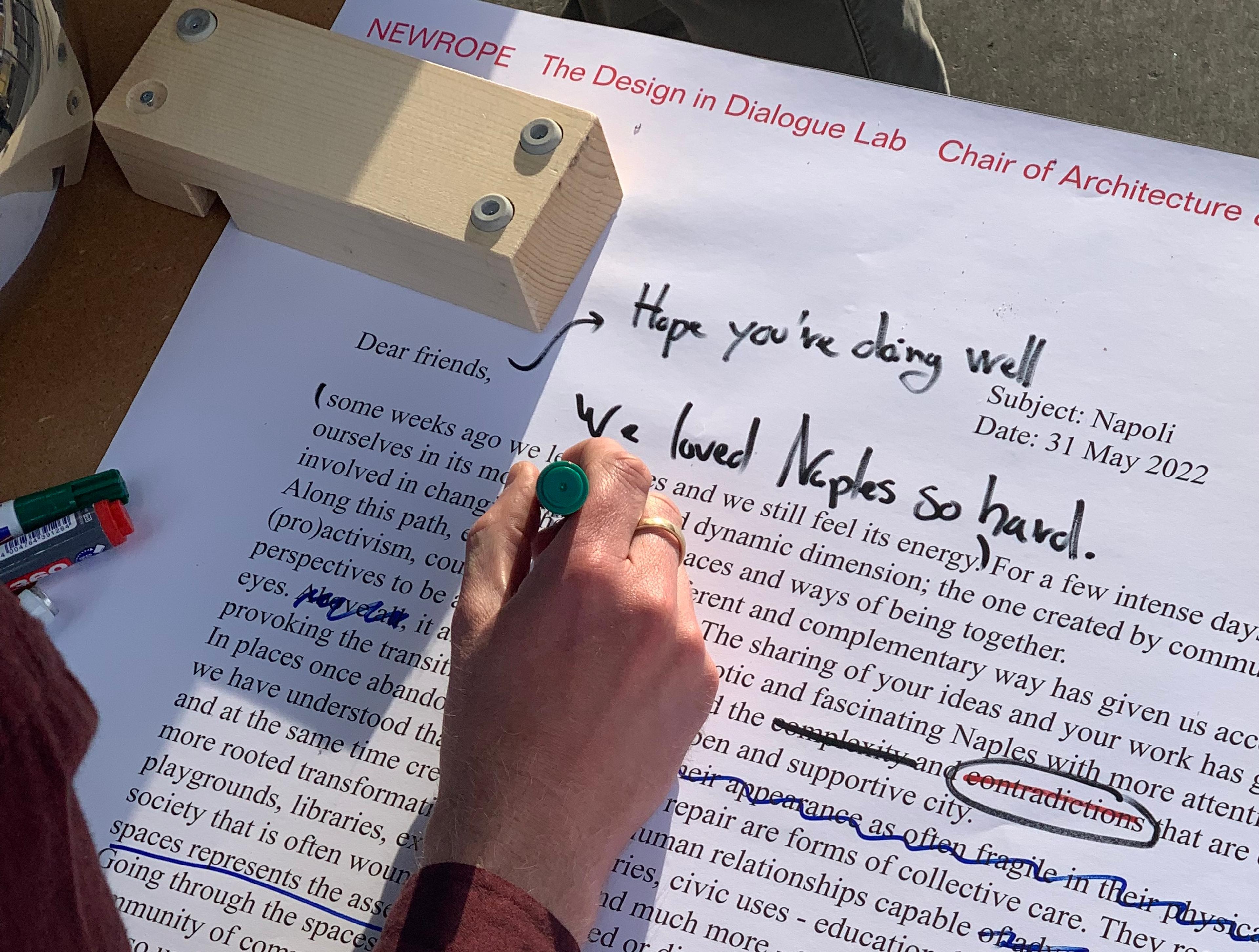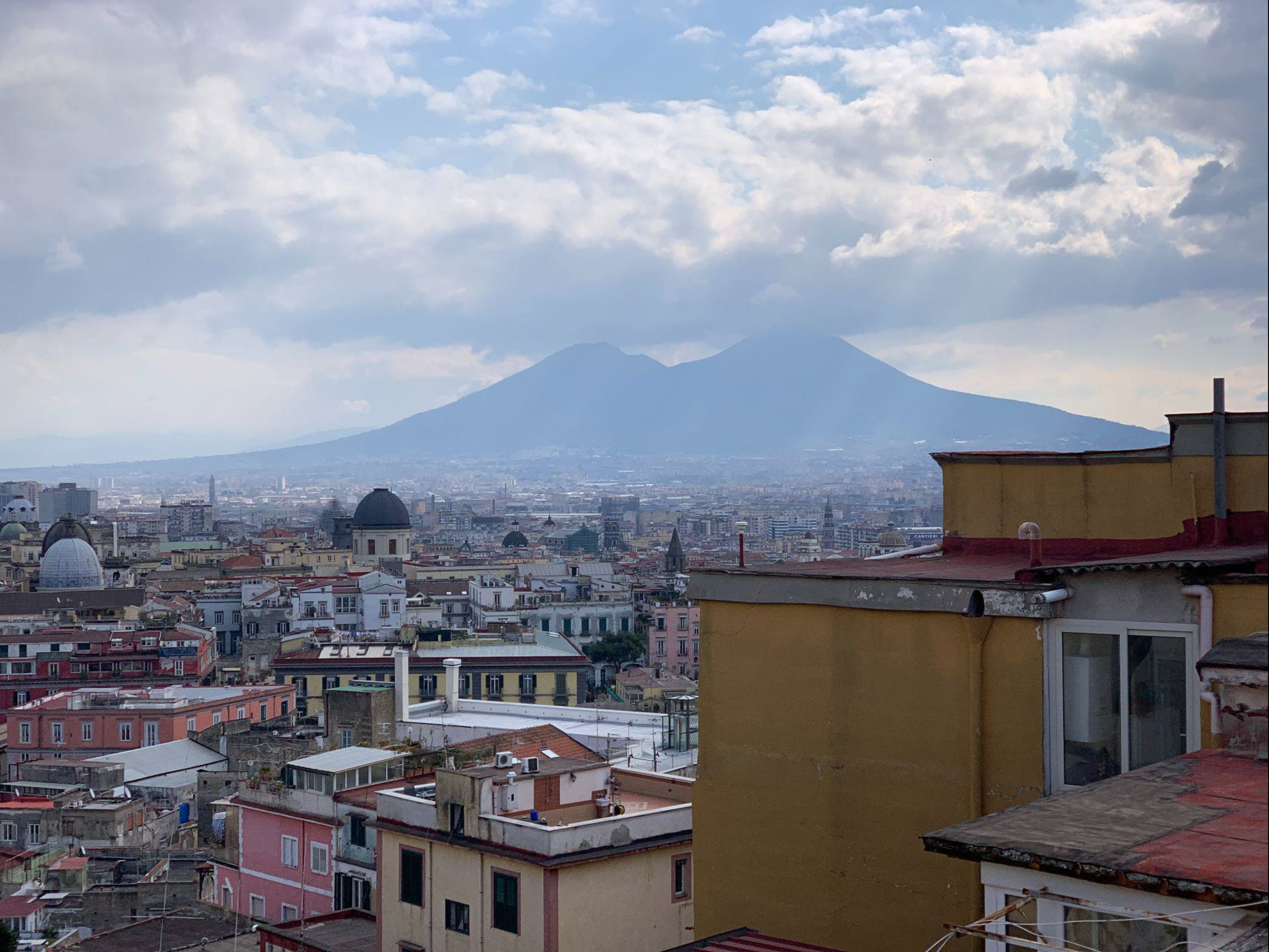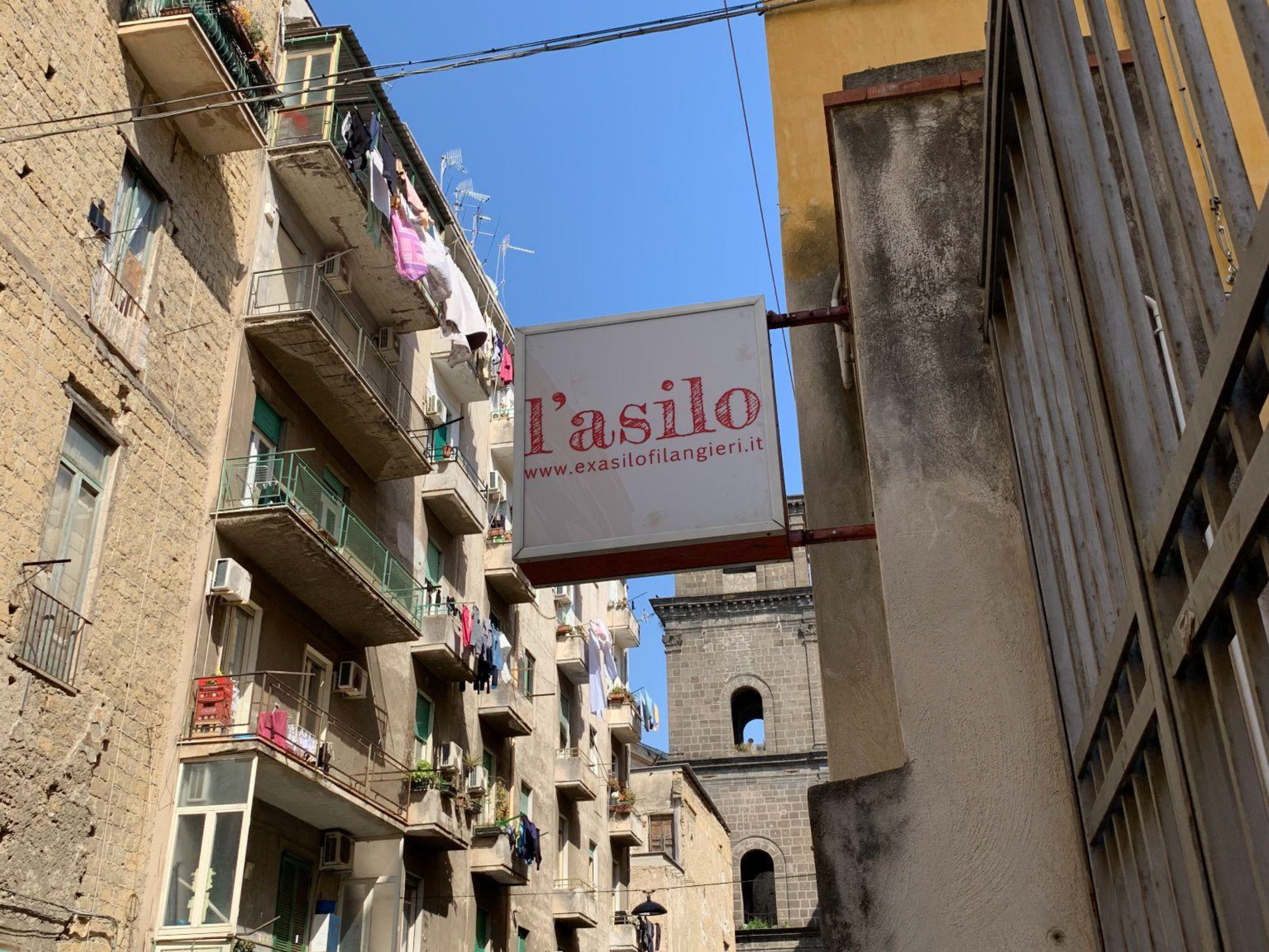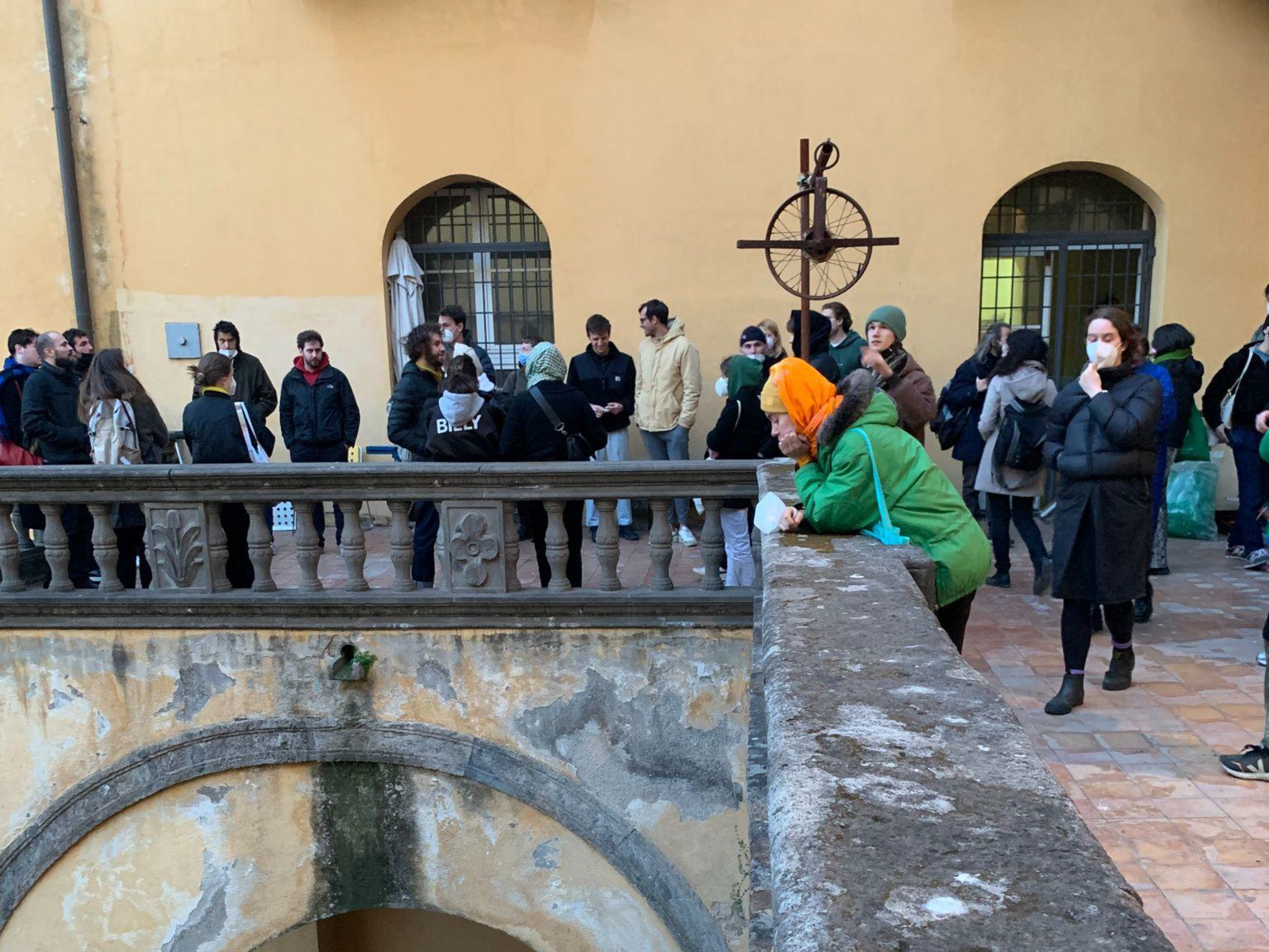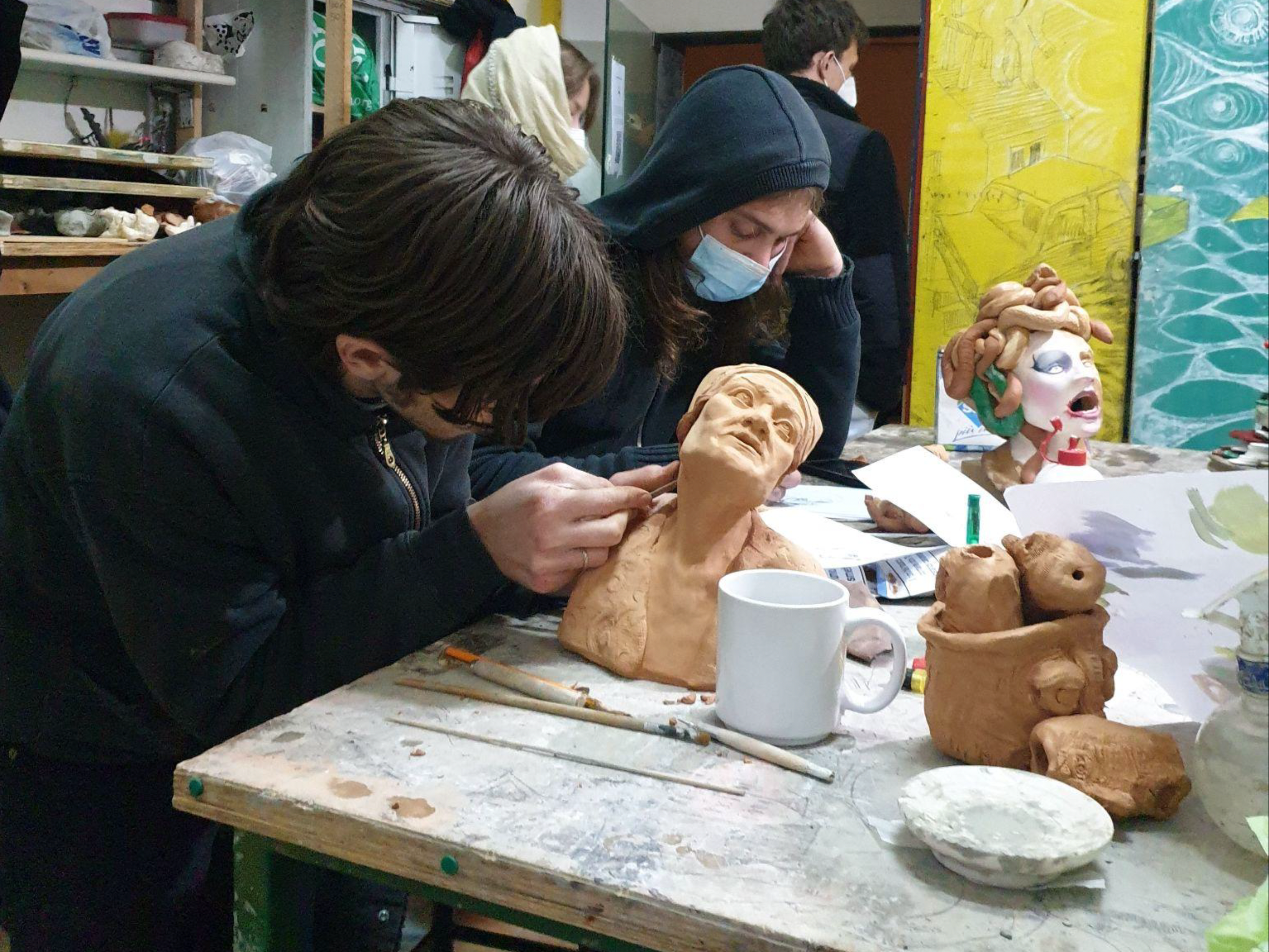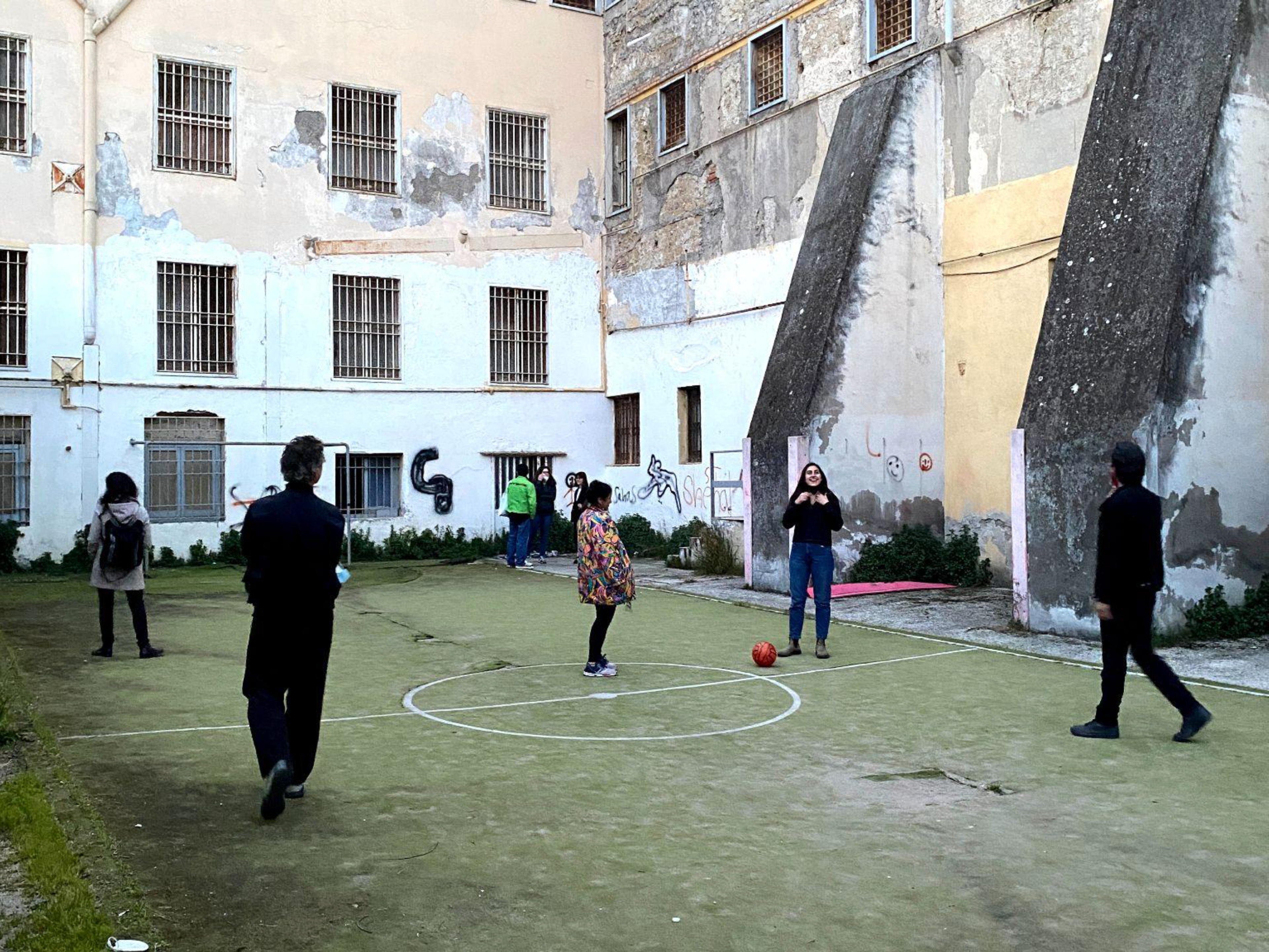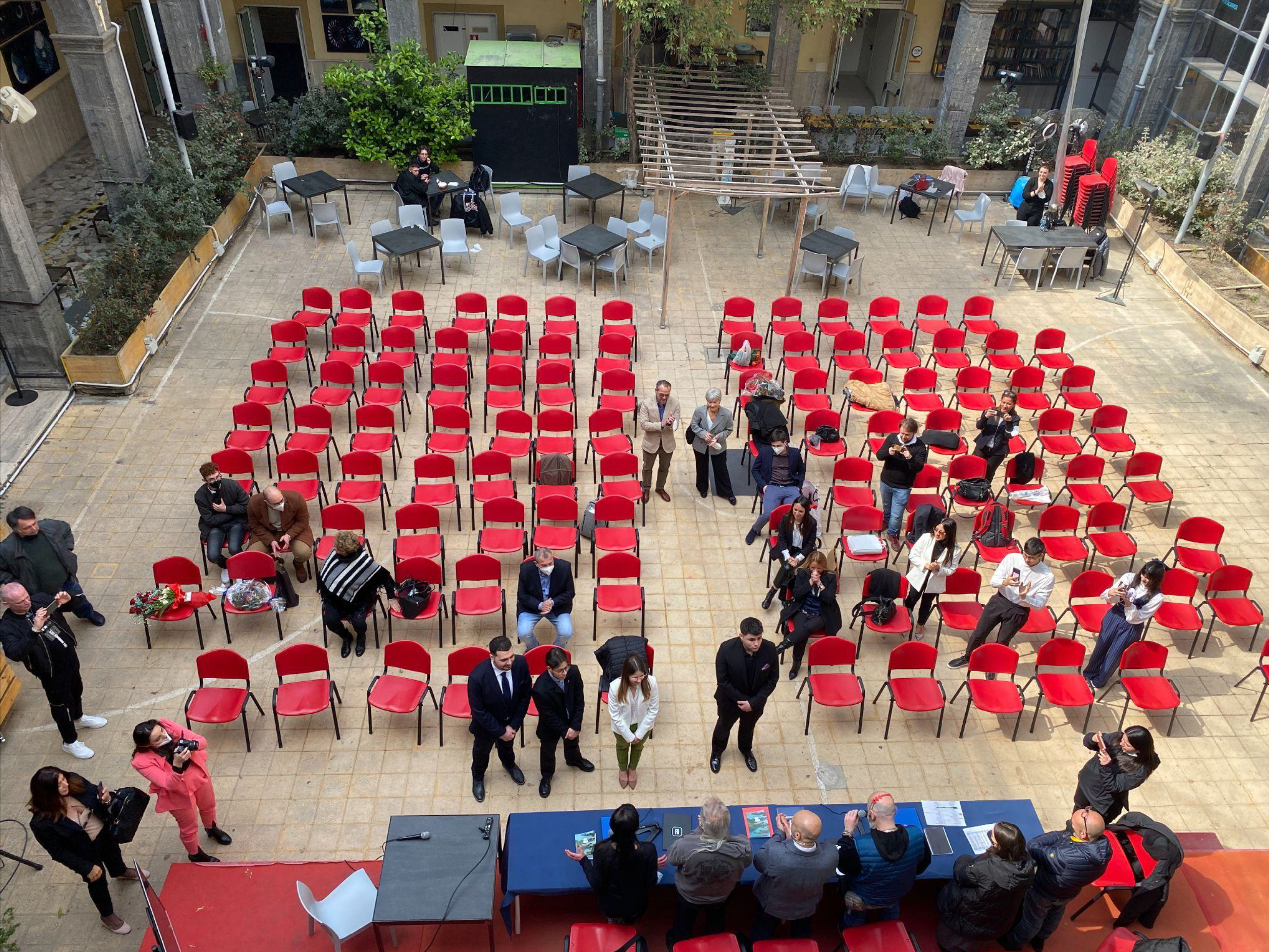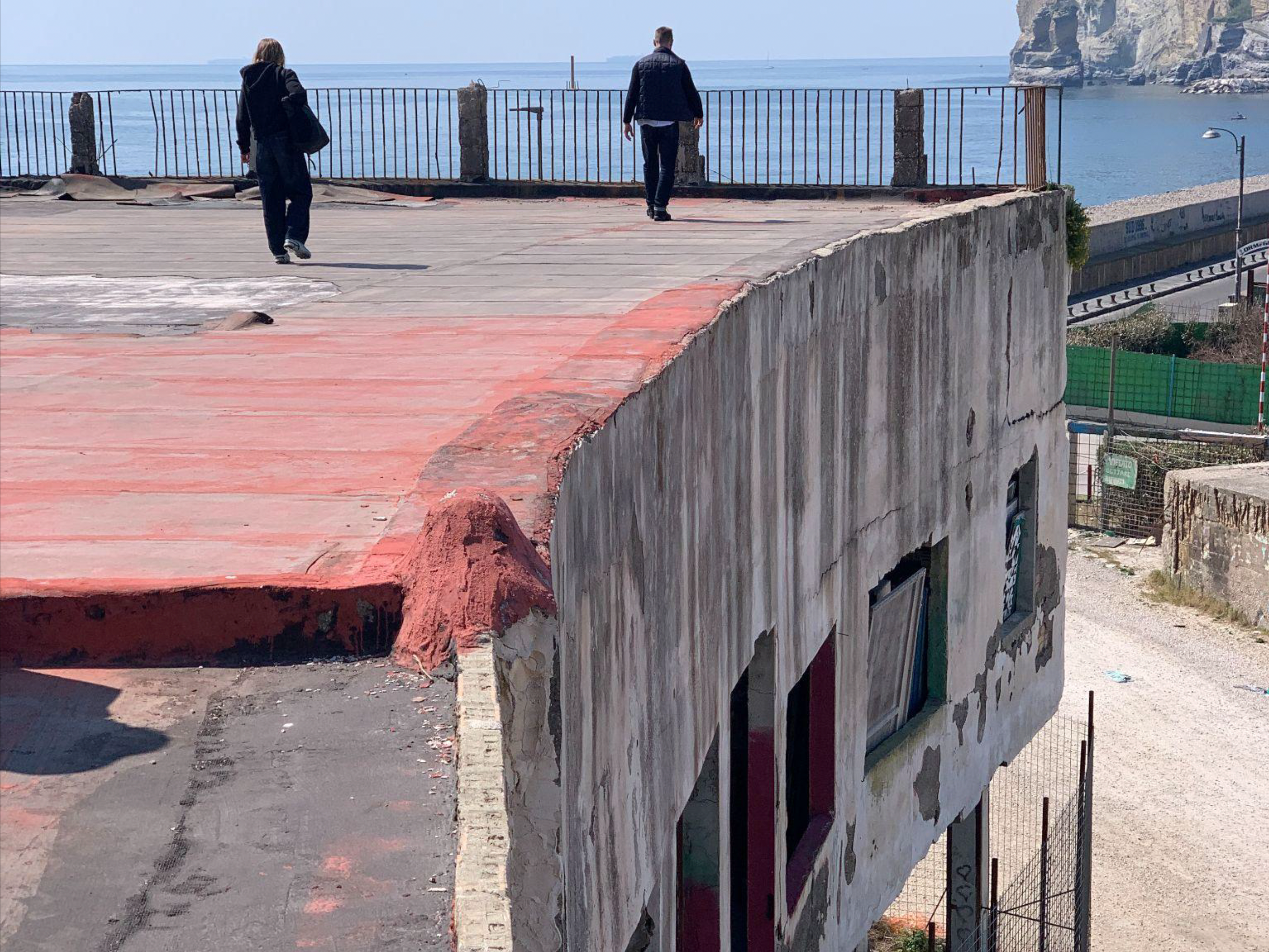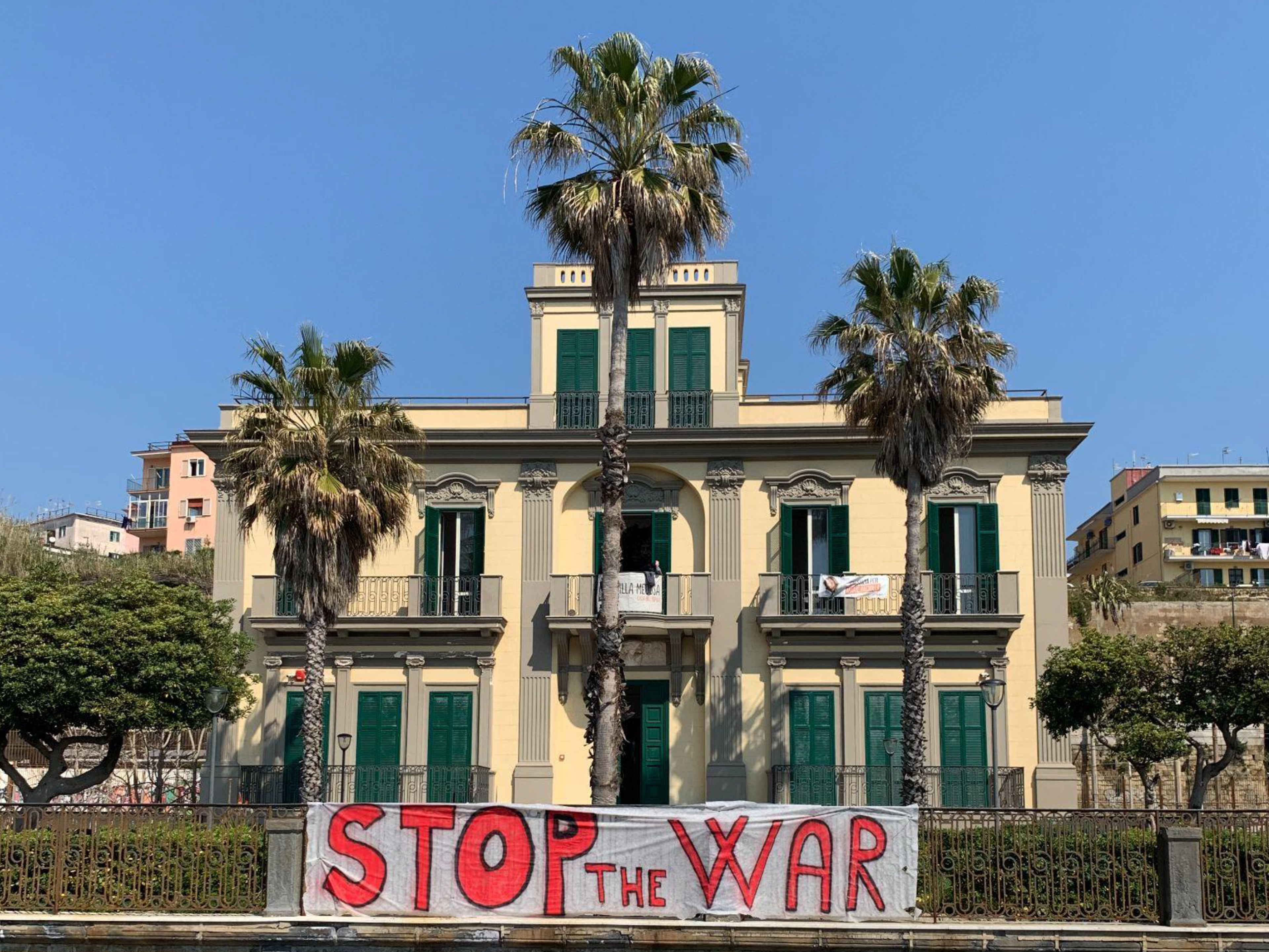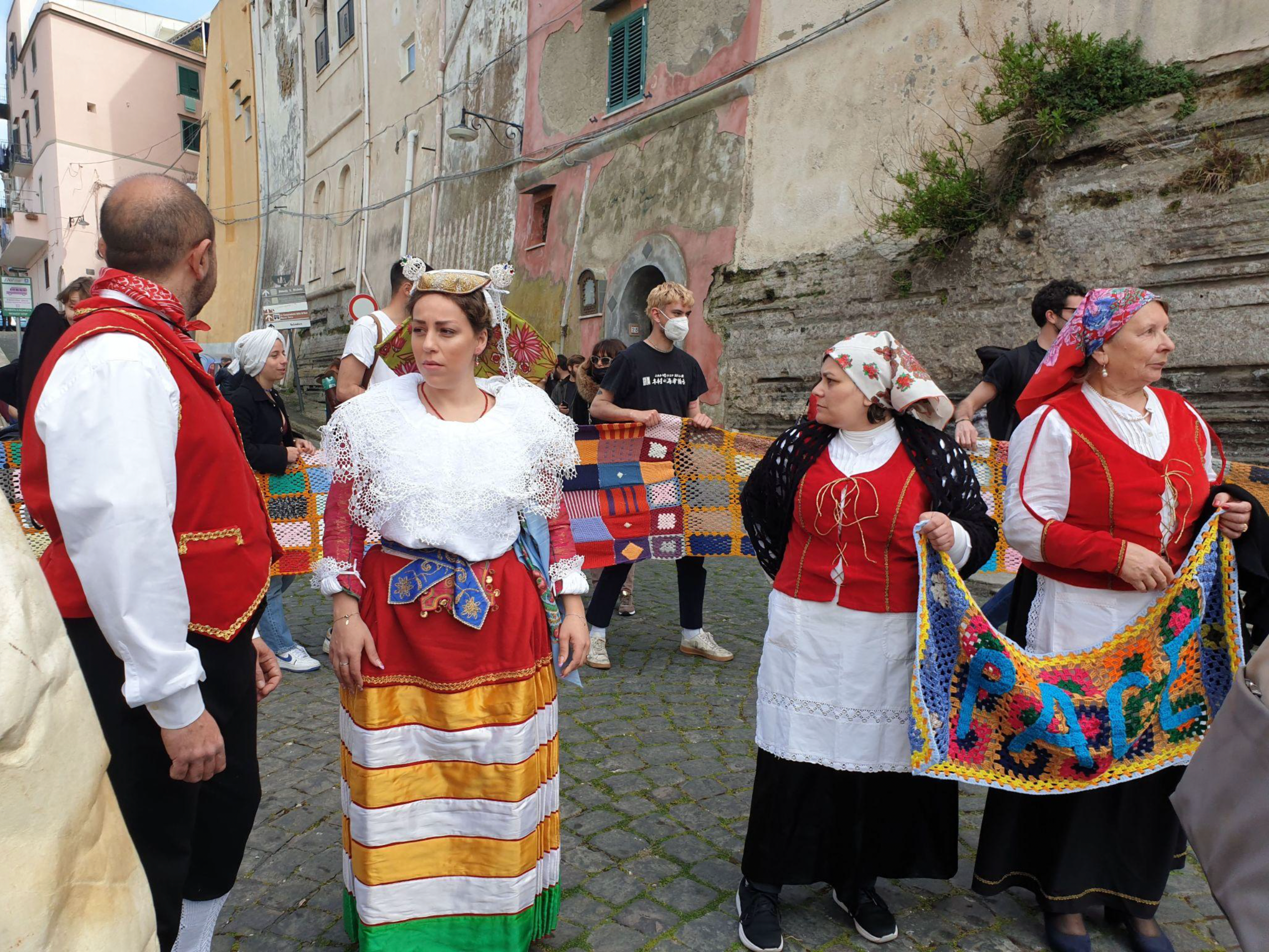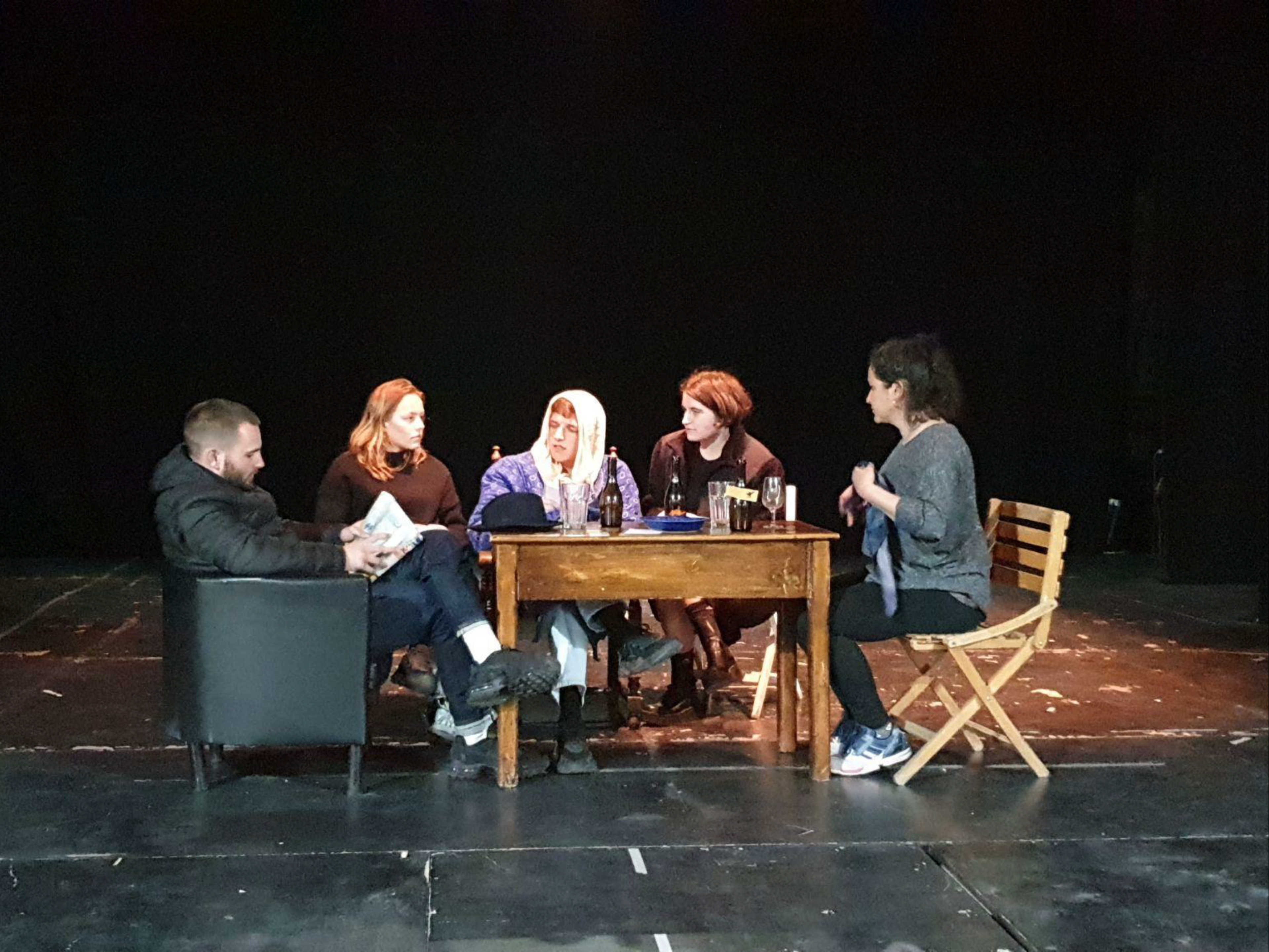Seminar Week Naples – Commoning Urban Transformation
Introduction
During the 2022 spring semester, we spent our seminar week in the Italian city of Naples. We immersed ourselves in the micro stories that are reshaping the abandoned spaces of the city thanks to the tenacity and passion of interdependent communities. A growing network of citizens has undertaken collective actions by making accessible neglected public areas and buildings, including former monasteries, a hospital, and a majestic villa that overlooks the sea.
Referring to themselves as ‘Commons Napoli’, the network represents the idea that publicly-owned buildings and (public) spaces in the city should be considered collectively owned and serve the entire community, similar to other commons, such as natural resources (air, water, soil) and cultural heritage. With their acts of what they call “civic disobedience” – or what could also be seen as civic responsibility – they started a dialogue with local institutions and have been recognized by the Municipality of Naples as part of the fundamental values of the city.
Associations and actors of the network of commons introduced us to the management and maintenance of several ‘liberated’ spaces. The stories of the liberated spaces offered us a lens through which we started to rethink such concepts as democracy, commoning, agency, reuse and care in the urban environment. How do architects position themselves in this context? What role does design play in revealing and unlocking the transformative potential of these spaces?
Context
Naples is the third most populous city in Italy, after Rome and Milan. It is the capital city of the Campania Region. Characterised by urban sprawl, and with poverty concentrated in the central area of the city (rather than in the periphery as is the case in Milan and Rome), over the past decade the City of Naples decided to invest in the reuse of heritage in the historic center, or Centro Storico. Simultaneously, grassroots movements started to emerge as guardians of the the common good. Many people were mobilized by the news that toxic waste had been dumped by the local Camorra crime syndicate for decades and had contaminated crucial water supplies.
Naples’ journey to the urban commons took off in 2012 with the informal management of a former convent called ‘Asilo Filangieri’, a monumental building in the city centre owned by the City of Naples. The community that started the informal management of the space was composed mostly of artists who opposed the high unemployment and precarious working conditions of the cultural sector. Rather than conceiving the building of the Asilo Filangieri as simply an ‘occupied space’, occupants started seeing it as a common. They transformed it into a cultural and arts centre and made means of production (for example theatre stages, crafts material) free and accessible to all.
The process culminated in 2016, with the ratification of a new resolution by the City of Naples, which enabled other public spaces to adopt the civic use model of L‘Asilo and be declared as ‘emerging urban commons’. In addition to the Asilo Filangieri, in fact, seven public proprieties were recognised by the City Council of Naples as “relevant civic spaces to be ascribed to the category of urban commons”: Ex-Convento delle Teresiane; Giardino Liberato; Lido Pola; Villa Medusa; Ex-OPG di Materdei; Ex-Carcere Minorile – Scugnizzo Liberato; Ex Conservatorio S. Maria della Fede; Ex- Scuola Schipa. Since then, more spaces have been ‘liberated’.
Click here to read more about the commons of Naples
Programme
During the week, we explored different case studies of social activities that transformed the urban spaces of Naples. We visited different commons that are part of the “Commons Napoli” network. Additionally, we looked at similar projects of other groups of people who regenerated abandoned places and transformed them into spaces for social activities, exhibitions, and historical knowledge. All these different spaces and processes have been able to reactivate entire neighbourhoods. As catalysts of collective energies, these urban interventions reacted to a state of decline of both local heritage and communities and found solutions to cooperate and mobilise for change. Through interviews, guided walks, workshops, discussions and other forms of engagement we gained knowledge about the history and future plans of these commons.
Day 1 – During the first day we visited Scugnizzo Liberato and L’Asilo (, two of the commons of Naples. Convento delle Cappuccinelle, originally founded in 1585, was turned into a youth detention centre in the 1800s. Currently, it is home to an urban regeneration project named ‘Scugnizzo Liberato’, meaning ‘Freed street boy’ (more info here). The project was initiated by the occupation of the building by Sacco Matto, a citizens collective aimed at filling empty urban spaces with a social purpose. Scugnizzo Liberato is managed based on radical open democratic principles. During the evening, we participated in the weekly assembly of L’Asilo: an independent centre for artistic, social and cultural production, run by an informal community of artists, activists, researchers and (other) citizens.
Day 2 – FOQUS - Quartieri Spagnoli is an urban regeneration project in the Spanish Quarters of Naples, a disinvested area characterized by precariousness and urban degradation. Based in the former Montecalvario Institute, this private initiative houses a.o. a rehabilitation center for the mentally challenged, several schools, a gym, gallery space and restaurant. During the afternoon, we met with several actors of the network of the Commons Napoli at the Department of Architecture, University of Naples Federico II. In the evening, we met with the collective of artists “Demanding the impossible” at L’Asilo.
Day 3 – We started the third day with a discussion at L’Asilo on “Sowing common goods. Civic and collective uses, environment, right to the city” with the participation of representatives of the Municipality of Naples. During the afternoon, we wandered around the city looking for traces of the commons. In the evening, students took part in the thematic table discussions at L’Asilo, one of the formats in place to promote participation and facilitate the self-governance of this urban common.
Day 4 – In the morning we drove to the outskirts of the city to visit Lido Pola and Villa Medusa, two commons along the Mediterranean coast in the Bagnoli district, and meet with some of the people behind these initiatives. After a workshop session at L’Asilo in the afternoon, we walked around the old city center and visited the Foundation Made in Cloister, an exhibition space and performative art center. Situated in the former Santa Caterina a Formiello convent, it was in a state of total abandonment and was used as an indoor car park, before it was repurposed and renovated in dialogue with the neighborhood.
Day 5 – Rione Sanità is a district of Naples known for its small street markets; we visited it with people from the La Paranza Social Cooperative, who took the initiative to open up the Catacombs of San Gennaro. an underground paleo-Christian burial and worship site in Naples. We spent the afternoon preparing for the final event, which took place at L’Asilo in the evening. On this occasion, students shared their observations and group conversations in the form of a series of performances - or role plays. We were joined by people we had met during the week.
Day 6 – On the final day we visited the island of Procida, one of the Phlegraean Islands off the coast of Naples. As Italy’s ‘Capitale della Cultura 2022’, or Capital of Culture, the island hosted a vast programme of public cultural events. We engaged with the local community by participating in the “la coperta della pace” (the blanket of peace) march against the war in Ukraine. The peace blanket, about forty meters long, was made by over one hundred women from about thirty associations in the Lagonegro area and beyond.
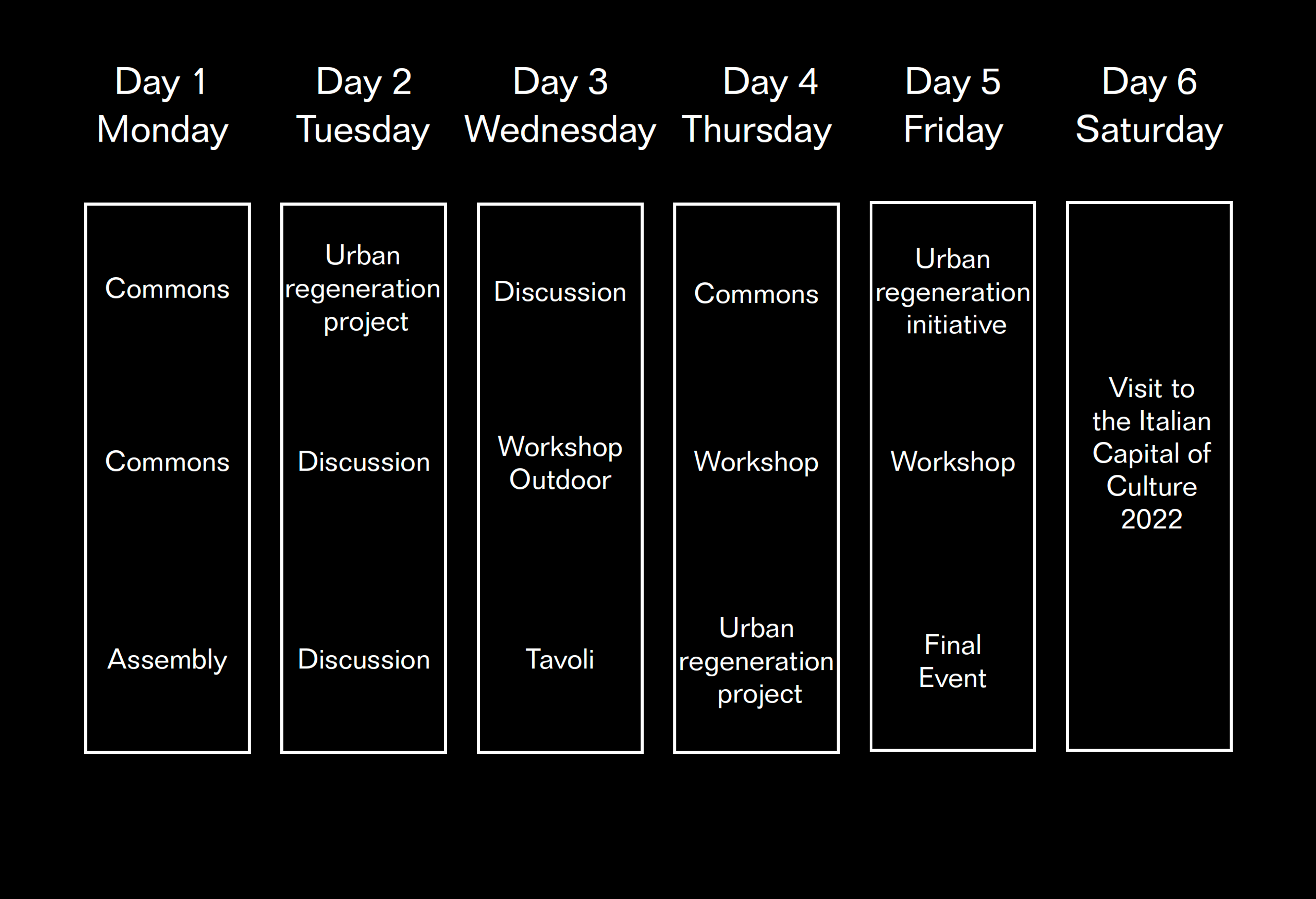
Schedule of seminar week
Credits
[Studio team] Marica Castigliano, Natassa Dourida, Ellena Ehrl, Michiel van Iersel, Freek Persyn
[Students] Tommaso Aliverti, Helen Bangerter, Alessandro Canonica, Federico Cigolini, Sarina Costanzo, Lucia Giacobbi, Cheryne Götz, Andri Heini, Noé Herrli, Aleksandar Ilic , Mario Kündig, Mona Lecoultre, Christian Peterhans, Danny Sahan, Giacomo Sarra, Insa Streit, Chloe Szwarc, Lucas Tanner, Fiona Wagner, Leon Weissheimer
Special thanks to everyone we met and who helped us navigate and understand the urban commons and cultural life of Naples, including the kind people of L’Asilo - Ex Asilo Filangieri, Scugnizzo Liberato, Ex OPG Occupato - Je so’ pazzo, Lido Pola, Villa Medusa – Casa del Popolo, Commons Napoli, University of Naples Federico II, FOQUS Foundation, Made in Cloister Foundation, La Paranza (Cooperative of Rione Sanità and Catacombe di Napoli), Procida - Italian Capital of Culture 2022.
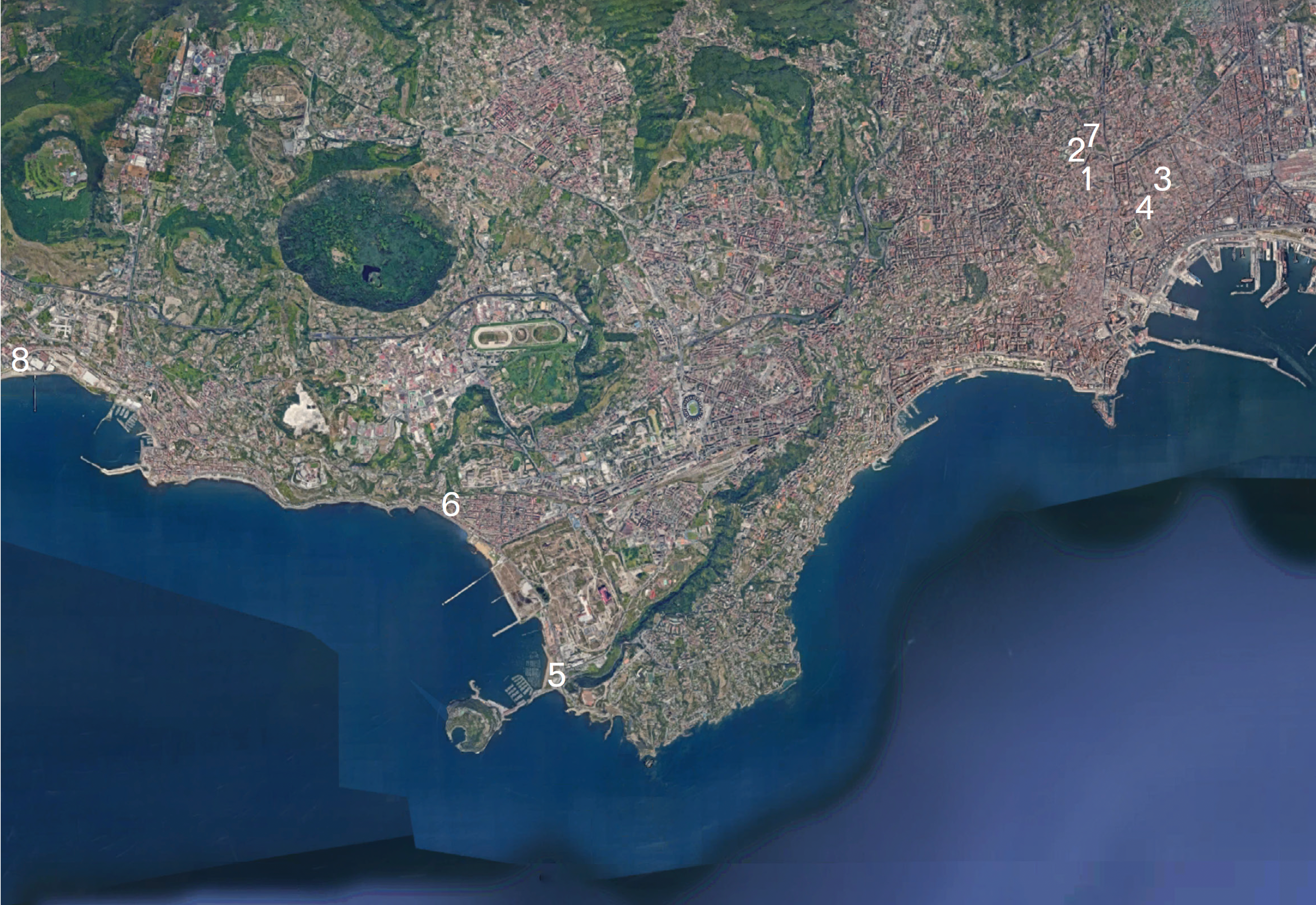
Satellite image of Naples with the Commons Napoli marked by numbers: 1 – Scugnizzo Liberato, 2 – Ex OPG Occupato - Je so’ pazzo, 3 – L’Asilo - Ex Asilo Filangieri, 4 – Santa Fede Liberata, 5 – Lido Pola, 6 – Villa Medusa - Casa del Popolo, 7 – Giardino Liberato di Materdei, 8 – Ex Convitto Monachelle
